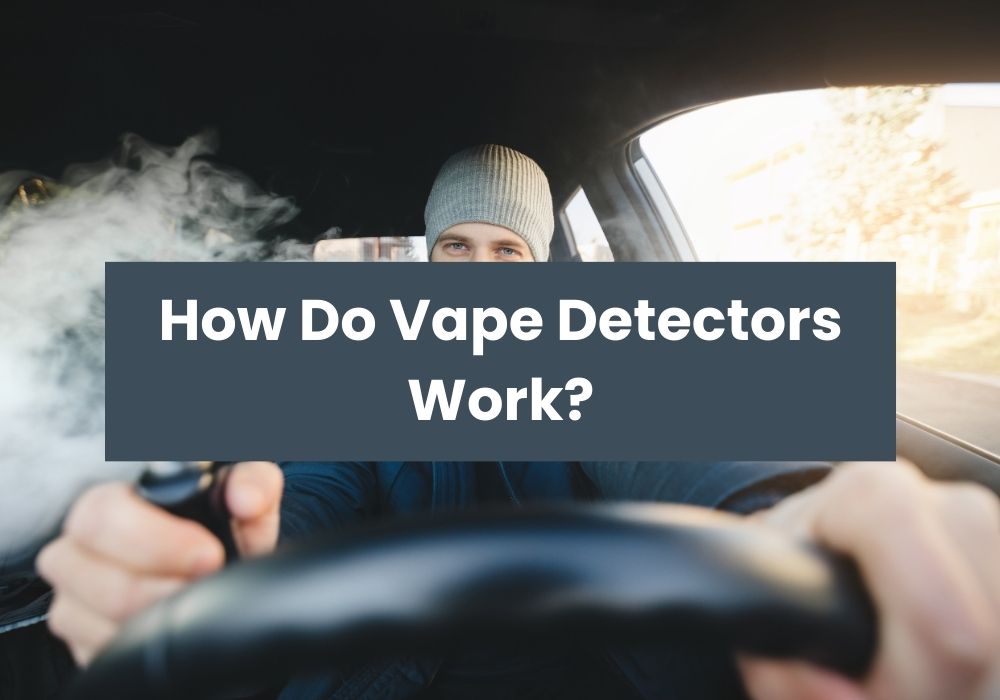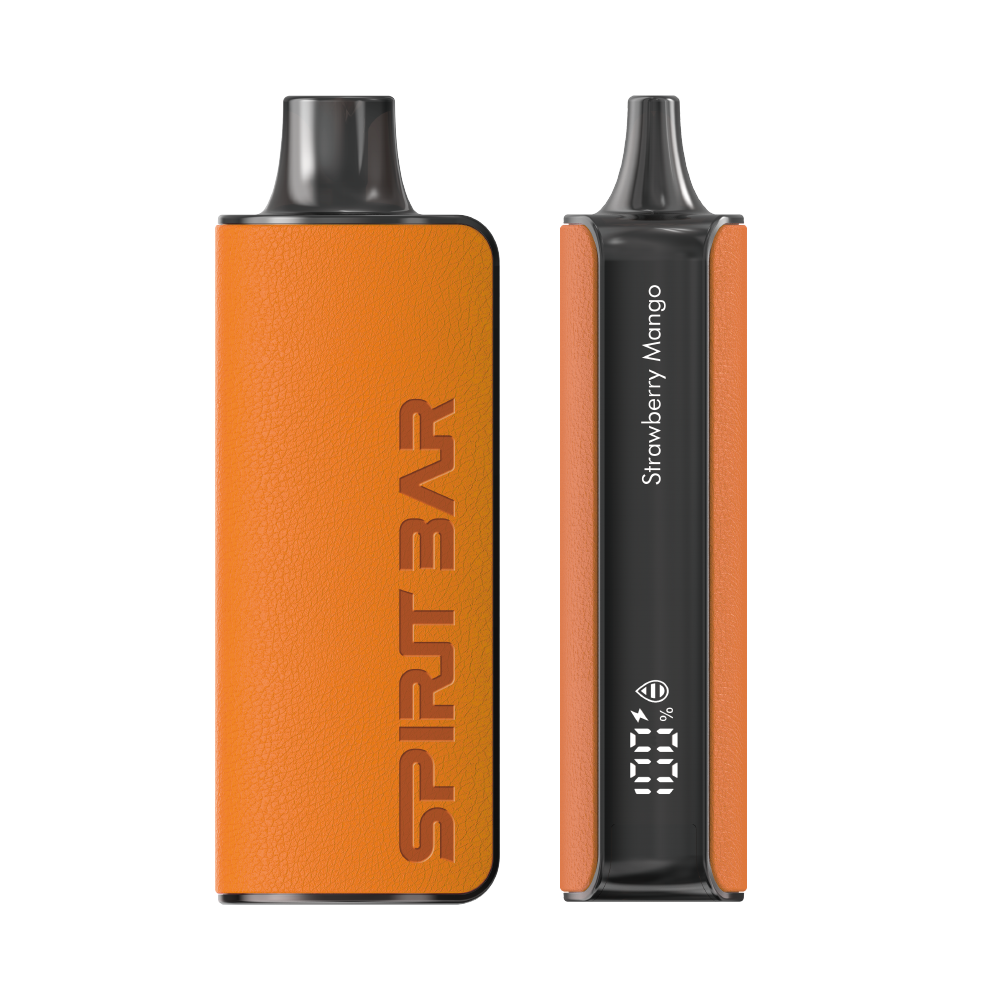How Do Vape Detectors Work?

So, you want an introduction to an article about how vape detectors work? Great! If you’re a school administrator or a property owner, you’re probably concerned about vaping on your premises. Vaping is a growing trend among teenagers, and it can be difficult to detect because it doesn’t produce smoke, which makes it hard to know when someone is vaping. That’s where vape detectors come in. In this article, we’ll take a closer look at how vape detectors work and what you can do to avoid triggering them.
Vape detectors are devices that can detect vaping, smoke, carbon monoxide, and other threats in indoor settings. They are used by schools, businesses, and property owners to prevent teen vaping and improve air quality. These detectors work by detecting the presence of specific chemicals that are released when vaping occurs. These chemicals include nicotine, propylene glycol, and vegetable glycerin. There are two main types of vape detectors: particulate detectors and sensor detectors.
Particulate detectors work by detecting the tiny particles that are produced when someone exhales vapor. These particles are too small to be seen with the naked eye, but they can be detected by particulate detectors. Sensor detectors, on the other hand, work by detecting the chemicals that are released when someone vapes. These detectors are more sensitive than particulate detectors and can detect even trace amounts of chemicals in the air. Now that you know a little bit about how vape detectors work, let’s take a closer look at each type of detector and how they work.
The Nose of Technology: What is a Vape Detector?
You may think that vape detectors are some sort of high-tech, futuristic device that uses lasers and robots to detect the presence of vaporized e-liquids. But in reality, they’re much simpler than that.
At their core, vape detectors are just sensors that are designed to pick up on changes in the air quality caused by vaping. These sensors can detect the presence of various chemicals and particles that are commonly found in e-cigarette vapor, such as nicotine, propylene glycol, and vegetable glycerin.
When a vape detector senses the presence of these chemicals, it sends out an alert to whoever is responsible for enforcing the no-vaping policy in the area. This could be a school administrator, a security guard, or even a concerned parent.
So, how exactly do these sensors work? Well, there are a few different types of vape detectors out there, but most of them use some combination of the following methods:
SPIRITBAR Katana BP10000
- Slender, leather-textured body reminiscent of a katana handle for an authentic samurai feel
- Unique samurai-inspired e-liquid flavor - fruity yet not too sweet, with a luxurious, elegant aroma
- Powerful 650mAh rechargeable battery for extended vaping time
- Large 18ml e-liquid capacity and 10,000 puff capacity
- Advanced mesh coil and e-liquid & power display screens for optimal vaping experience
The special juice captures the essence of the samurai spirit with its rich, smoothly pulsating flavor that brings new satisfaction with every puff. The device's slender, leather-textured design evokes the grip of a samurai's katana, making this product a perfect choice for beginner vapors.
- Particle detection: Some vape detectors use sensors that are specifically designed to detect the tiny particles that are emitted when someone exhales e-cigarette vapor. These sensors can pick up on particles as small as 0.3 microns in diameter, which is smaller than the width of a human hair!
- Chemical detection: Other vape detectors use sensors that are designed to pick up on specific chemicals that are commonly found in e-cigarette vapor. These sensors can detect chemicals like nicotine, formaldehyde, and acrolein, which are all known to be harmful to human health.
- Temperature detection: Finally, some vape detectors use temperature sensors to detect the heat that is generated by e-cigarettes. When someone takes a puff on an e-cigarette, the device heats up and emits a burst of warm air. These sensors can pick up on this heat signature and use it to detect the presence of vaping in the area.
Overall, vape detectors are a simple but effective tool for preventing vaping in public places. By using a combination of particle, chemical, and temperature sensors, these devices can detect the presence of e-cigarette vapor and alert authorities to take action. So the next time you’re tempted to take a puff in a no-vaping zone, remember that the nose of technology is watching!
Got it! Here’s your section:
Smoke and Mirrors: How Do Vape Detectors Detect?
So, you’re curious about how vape detectors work. Well, you’ve come to the right place! Vape detectors use sensors to detect the presence of certain chemicals, compounds, or particles that are typically emitted from vaping devices. These include vapor matter, THC, CBD, nicotine, smoke dust, mist, propylene glycol, and glycerin.
These sensors are typically installed in public places like schools, hospitals, and office buildings to prevent people from vaping indoors. When the sensors detect the presence of these chemicals, they trigger an alarm, alerting the authorities or building management to the presence of a vaping device.
But how do these sensors actually work? It’s all smoke and mirrors, my friend. Well, not exactly smoke and mirrors, but it’s definitely a bit of a magic trick.
Vape detectors use a combination of different sensors to detect the presence of vaporized chemicals. Some detectors use optical sensors that detect the presence of smoke or vapor, while others use chemical sensors that detect the presence of specific chemicals or compounds.
But here’s the thing: these sensors aren’t foolproof. In fact, they can be triggered by a number of different things besides vaping. For example, they can be triggered by smoke from a nearby fire, or by aerosol sprays like hairspray or deodorant.
So, while vape detectors can be effective in preventing people from vaping indoors, they’re not perfect. They’re just one tool in the fight against indoor vaping.
The Science of Scent: The Role of Aerosols
Picture this: you’re sitting in a room with a friend, chatting away when suddenly, you smell something strange. Is it a new perfume? A strange food? No, it’s something much more concerning: someone is vaping nearby.
SPIRITBAR Jack’s Flask 9000 Puffs
- Stylish pirate flask-shaped body providing an exciting vaping experience
- Delivering up to 9000 puffs per device
- 20ml e-liquid capacity with 50mg nicotine strength for satisfying throat hit
- Specialized pirate-themed e-juice flavors for rich, swirling taste
- Premium mesh coil optimizes flavor profile for maximum vaping enjoyment
This disposable vape captures the daring spirit of the high seas with its flask styling and signature pirate e-juice flavors. The extraordinary battery life provides 9000 indulgent puffs for extended vaping pleasure. Live boldly and freely with the Jack's Flask - a legendary vaping experience fit for a pirate's adventures.
But how did you know? How can your nose detect something that’s invisible to the naked eye? The answer lies in the science of scent and the role of aerosols.
Aerosols are tiny particles that can float in the air. They can come from a variety of sources, including natural ones like pollen and dust, and human-made ones like smoke and vape. When you inhale, these particles enter your nose and interact with your olfactory receptors, which are responsible for detecting scents.
The way aerosols interact with your olfactory receptors is what makes them so powerful. Unlike larger particles, which can get stuck in your nose or throat, aerosols can travel deep into your lungs, where they can cause damage over time. This is why it’s so important to be aware of what you’re breathing in, especially in enclosed spaces like classrooms and offices.
So, how do vape detectors work? Most vape detectors use sensors to detect the presence of aerosols in the air. These sensors can be calibrated to detect specific types of aerosols, like those produced by e-cigarettes. When the sensors detect aerosols, they trigger an alarm or notification, alerting people nearby to the potential presence of vaping.
While vape detectors can be a useful tool in detecting vaping in public spaces, it’s important to remember that they’re not foolproof. Some aerosols, like those produced by certain types of e-cigarettes, can be harder to detect than others. Additionally, vape detectors can’t detect the presence of other harmful substances, like carbon monoxide and formaldehyde, which can also be present in vape aerosols.
In conclusion, the science of scent and the role of aerosols play a crucial role in detecting vaping in public spaces. By understanding how aerosols interact with our olfactory receptors and how vape detectors work, we can better protect ourselves and others from the potential dangers of vaping.
The Heart of the Machine: Vape Detector Components
So, you’re curious about how vape detectors work? Well, let’s dive into the heart of the machine and take a closer look at the components that make it all possible.
Sensing Elements
At the core of every vape detector is a sensing element. This element is responsible for detecting the presence of vapor in the air. There are two main types of sensing elements: particulate detectors and sensor detectors.
Particulate detectors use a laser to detect the presence of smoke particles in the air. When vapor is present, the laser beam is scattered, triggering an alarm. Sensor detectors, on the other hand, use a chemical sensor to detect the presence of specific chemicals released by vaporizers.
Control Unit
The control unit is the brain of the vape detector. It receives the signal from the sensing element and processes it to determine if vapor is present. If vapor is detected, the control unit triggers an alarm.
Power Supply
Like any electronic device, vape detectors require a power supply to operate. Most vape detectors are powered by either batteries or an AC adapter.
Alarm
The alarm is what alerts you to the presence of vapor. It can take many forms, including a loud noise, flashing lights, or a combination of the two. Some vape detectors also have a silent mode, which sends an alert to a monitoring system instead of triggering an audible alarm.
Enclosure
Finally, the enclosure is what holds all of the components together. It’s typically made of plastic or metal and is designed to be durable and tamper-proof.
And there you have it, the components that make up a vape detector. Pretty simple, right? Well, maybe not, but at least now you have a better understanding of how these devices work.
False Alarms: How Vape Detectors Distinguish Between Vape and Other Aerosols
So, you’re probably wondering how vape detectors can tell the difference between vape and other aerosols. After all, false alarms can be a real pain in the neck.
SPIRITBAR Katana BP10000
- Slender, leather-textured body reminiscent of a katana handle for an authentic samurai feel
- Unique samurai-inspired e-liquid flavor - fruity yet not too sweet, with a luxurious, elegant aroma
- Powerful 650mAh rechargeable battery for extended vaping time
- Large 18ml e-liquid capacity and 10,000 puff capacity
- Advanced mesh coil and e-liquid & power display screens for optimal vaping experience
The special juice captures the essence of the samurai spirit with its rich, smoothly pulsating flavor that brings new satisfaction with every puff. The device's slender, leather-textured design evokes the grip of a samurai's katana, making this product a perfect choice for beginner vapors.
Well, it turns out that vape detectors use advanced technology to distinguish between different types of aerosols. They can detect particles as small as 0.3 microns in size, which means they can pick up on even the tiniest amounts of vape.
But what about other aerosols, like smoke from burning popcorn or hairspray? Won’t those set off the alarm too?
Thankfully, vape detectors are smart enough to know the difference. They use algorithms to analyze the chemical composition of the particles in the air. This allows them to distinguish between harmless aerosols and potentially harmful ones, like vape.
Of course, this doesn’t mean that false alarms never happen. In fact, there are a few things that can trigger a false alarm, such as:
- High humidity levels
- Dust and other airborne particles
- Strong odors
- Malfunctioning equipment
So, while vape detectors are pretty darn good at what they do, they’re not perfect. But hey, at least they’re better than nothing, right?
The Laughing Gas: The Humorous Side of Vape Detectors
So you’ve heard about vape detectors, the newest technology designed to catch sneaky vapers in the act. But did you know that these devices sometimes have a funny side too? Here are a few humorous aspects of vape detectors that you might not have considered.
Firstly, vape detectors can sometimes be triggered by things other than e-cigarettes. For example, some detectors are sensitive enough to pick up on the vapor from laughing gas, which is sometimes used in dental procedures. Imagine the confusion when a dentist’s office sets off a vape detector!
Another amusing aspect of vape detectors is the lengths that some people will go to in order to avoid being caught. As Wired reports, some teenagers have taken to blowing vape smoke through the air vents or even into the toilet bowl to avoid detection. It’s almost like a game of cat and mouse between vapers and the vape detectors.
Finally, there’s the fact that vape detectors can sometimes be fooled by clever tricks. For example, some detectors rely on sensors that detect the presence of tiny particles in the air. But what if you were to blow your vape smoke into a plastic bag and then exhale into the room? The smoke would be contained in the bag, but you’d still be able to enjoy your e-cigarette without setting off the detector.
Overall, vape detectors may be a serious issue for some people, but there’s no denying that there’s a humorous side to this technology as well. Whether it’s the confusion caused by laughing gas, the cat and mouse game between vapers and detectors, or the clever tricks used to avoid detection, there’s plenty of amusement to be found in the world of vape detectors.
The Nose Knows: The Accuracy of Vape Detectors
You might think that vape detectors are infallible, but the truth is they can be a bit finicky. While they are designed to detect the presence of vaporized e-liquids in an area, they may not always be accurate.
One of the main reasons for this is that vape detectors use a variety of sensors to detect the vapor. Some detectors use photoelectric sensors to detect smoke particles, while others use sound detectors to pick up the sound of vaping. There are also aerosol detectors that can detect the presence of vaporized e-liquids in the air.
However, vape detectors can sometimes be triggered by other things that are not related to vaping. For example, if someone sprays air freshener or uses a fog machine, the vape detector may mistake it for vaporized e-liquids.
Another issue is that vape detectors can have trouble detecting certain types of vapes. For example, some vape detectors may not be able to detect the vapor produced by pod systems or disposable vapes.
Overall, while vape detectors are a useful tool for preventing vaping in certain areas, they may not always be accurate. So, if you’re trying to sneak a vape in a non-vaping area, you might want to be extra careful and keep an eye out for any vape detectors around.
A Puff of Prevention: The Importance of Vape Detectors in Schools
You may think that vaping is harmless, but the truth is that it can be just as dangerous as smoking cigarettes. And with the rise of vaping among teens, schools are taking action to prevent it from happening on their premises. One of the ways they are doing this is by installing vape detectors.
Vape detectors are devices that can detect the presence of vapor in the air. They work by using sensors that can detect the chemicals found in vapor. When these sensors detect vapor, they send a signal to the school’s security system, which can then alert school officials.
Installing vape detectors in schools is important for several reasons. First, it can help prevent students from vaping on school grounds. This is important because vaping can be a distraction to other students and can also be a health risk. Second, it can help schools identify students who may be struggling with addiction. By detecting the presence of vapor, schools can identify students who may need help quitting.
But how do vape detectors work? There are several different types of vape detectors, but most work by using sensors that can detect the chemicals found in vapor. These sensors are usually placed in areas where students are most likely to vape, such as bathrooms and locker rooms. When the sensors detect vapor, they send a signal to the school’s security system, which can then alert school officials.
Some vape detectors also have cameras that can capture images of students who are vaping. This can be helpful in identifying students who are breaking school rules.
In conclusion, vape detectors are an important tool for schools in preventing vaping among students. By detecting the presence of vapor, schools can identify students who may need help quitting and can also prevent vaping from happening on school grounds. So, if you’re a school administrator, consider installing vape detectors in your school to help keep your students safe and healthy.
The Future Smells Good: Innovations in Vape Detection Technology
You might think that vape detectors are a one-trick pony, but think again! Innovations in sensor technology, data analysis, and integration capabilities are continually enhancing the efficacy and versatility of vape detectors. The future of vapor detection is poised to witness groundbreaking advancements that will make the world a safer and healthier place.
One of the most exciting innovations in vape detection technology is the use of artificial intelligence (AI) and machine learning algorithms. These algorithms can detect patterns and anomalies in the data collected by vape detectors, allowing for more accurate and efficient detection of vaping. With AI, vape detectors can learn from their mistakes and improve their detection accuracy over time.
Another promising development in vape detection technology is the use of advanced sensors. These sensors can detect not only vape particles but also other harmful substances such as smoke and carbon monoxide. This multi-functional approach to detection can help schools and other public spaces keep their air clean and safe for everyone.
Finally, the integration of vape detectors with other smart devices is another exciting development in the world of vape detection technology. Imagine a world where vape detectors can communicate with air purifiers, HVAC systems, and even security cameras to provide a comprehensive and integrated approach to air quality control.
In conclusion, the future of vape detection technology is looking bright. With advancements in AI, sensor technology, and integration capabilities, vape detectors are becoming more accurate, efficient, and versatile than ever before. So breathe easy, my friend, because the future smells good!
Frequently Asked Questions
Why do vape detectors always seem to go off at the worst times?
It’s like they have a sixth sense for when you’re trying to be discreet, right? Unfortunately, vape detectors are just doing their job. They are designed to detect any type of vape aerosol, regardless of whether it contains nicotine or not. So, if you’re trying to sneak in a quick puff in the bathroom, just know that the vape detector is watching.
Can vape detectors detect if someone is just blowing air?
No, vape detectors are specifically designed to detect vape aerosol, which is different from normal air. Vape aerosol is made up of tiny particles that are released when you exhale from a vape device. So, if you’re just blowing air, the vape detector won’t go off.
Do vape detectors only detect nicotine or can they detect other substances?
Vape detectors are not limited to detecting nicotine. They can detect any substance that is released when you vape, including THC, CBD, and other chemicals. This is why vape detectors are becoming increasingly popular in schools and other public places, as they can help detect the use of illicit substances.
Are vape detectors really necessary or are they just a fad?
While some people may view vape detectors as a fad, they are actually quite necessary in certain settings. For example, schools and other public places have a responsibility to ensure the safety of their students and visitors. Vape detectors can help detect the use of vaping devices and other illicit substances, which can help prevent potential harm.
How sensitive are vape detectors and can they be adjusted?
Vape detectors are designed to be very sensitive, as they need to detect even small amounts of vape aerosol. However, they can be adjusted to be more or less sensitive depending on the specific needs of the setting. For example, in a school setting, the vape detector may be set to a higher sensitivity level than in a private home.
Is it possible to fool a vape detector by blowing the vapor into a bag or container?
No, it’s not possible to fool a vape detector by blowing the vapor into a bag or container. Vape detectors are specifically designed to detect vape aerosol in the air, so even if you blow the vapor into a bag or container, the detector will still be able to detect it. So, if you’re thinking of trying to outsmart the vape detector, think again.








